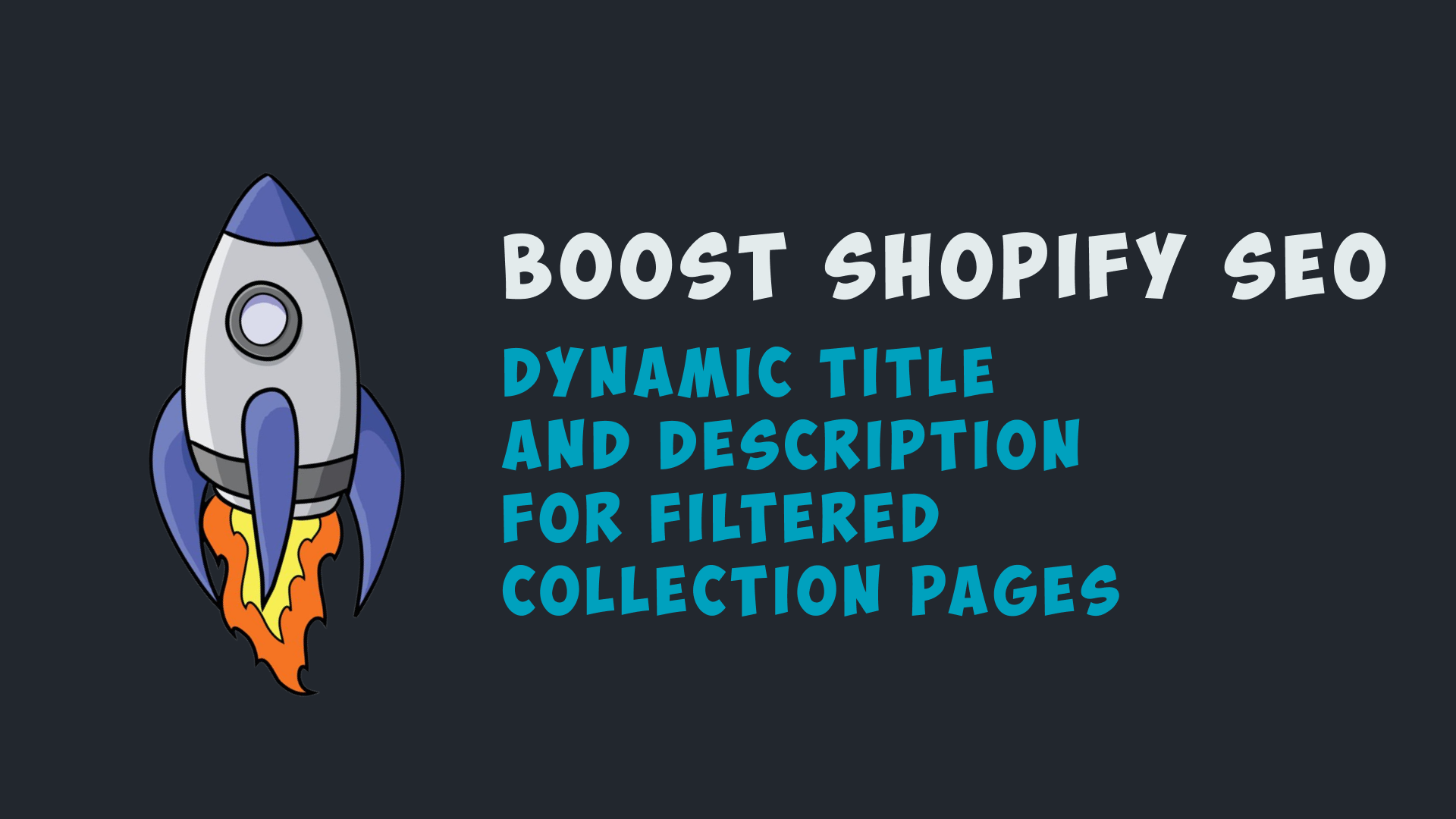How to Improve SEO in Shopify: Dynamic Titles and Descriptions for Filtered Collection Pages
A strong SEO strategy is crucial for driving traffic to your Shopify store. However, many Shopify themes lack a key feature: dynamically updating titles and descriptions when filters are applied on collection pages.

In the world of eCommerce, having a strong SEO strategy is crucial for driving traffic to your Shopify store. When users search for specific products, you want your site to be among the first they see. While Shopify themes offer many SEO-friendly features, there’s one critical feature often missing: dynamically updating titles and descriptions based on filters selected on collection pages.
Here’s why this is essential for SEO—and why it's surprising that this functionality isn’t integrated into Shopify themes.
Why Are Titles and Descriptions So Important?
Titles and meta descriptions are two of the primary elements search engines evaluate when ranking pages. They help communicate the page’s content to both search engines and potential customers. In Shopify, the default setting usually offers a single, static title and meta description for each collection page, but this approach has limitations.
If users apply filters, say, to view only “blue sneakers” or “summer jackets,” the static title and description may not reflect the filtered content. Not only can this create a confusing experience for users, but it also means missed SEO opportunities—search engines can’t effectively understand or rank this page as specific to the filtered query.
Why Dynamic Titles and Descriptions Matter for Filtered Collection Pages
Incorporating dynamic updates to titles and descriptions offers several advantages:
- Better Targeting of Long-Tail Keywords: Dynamic updates enable targeting of specific keywords related to users' filtered choices, helping you rank for long-tail keywords and driving more qualified traffic to your site.
- Enhanced User Experience: When titles and descriptions match the filtered content, users feel more confident that they’ve landed on the right page. This improves session duration and engagement—key SEO metrics.
- Improved Indexing: Dynamic elements make it clear to search engines that your page is highly relevant for certain keywords, improving your chances of appearing in search results.
How to Implement Dynamic Titles and Descriptions
While Shopify doesn’t provide this functionality out of the box, it can be achieved with a few code adjustments using vanilla JavaScript, or JavaScript libraries like Alpine.js or Vue.js. You can even use Liquid templates with metafields. Here are a few implementation strategies:
- Use JavaScript for Real-Time Updates: JavaScript can dynamically change the title and meta description whenever a user applies filters on the page.
- Leverage Shopify Metafields: Custom metafields allow you to store alternative titles and descriptions that reflect various filter combinations. When a user selects a filter, JavaScript pulls the appropriate metafield data to update the title and description in real-time.
This is optional. You can store the original value of the title or description from the Shopify admin. - Optimize for Performance: Since additional scripts can impact page load speeds, it’s important to keep the code optimized to avoid any negative effects on your SEO. You may heard something like "Do not add additional scripts to your theme, you website will be slow". It's not true. Adding optimized code won't heavily impact to the speed of your site.
Having trouble implementing this by yourself?
I've got you covered. You don't need to spend your time on customizing your store, I can help you, just reach me.
Why Shopify Themes Don’t Include This by Default
The lack of this functionality is surprising given its SEO benefits. One reason may be the complexity involved in managing and storing various title and description combinations for each filter. However, as SEO continues to evolve and the demand for a personalized shopping experience grows, it's likely we’ll see themes or apps that make this easier to implement.
Conclusion
By dynamically updating titles and descriptions for filtered collection pages, Shopify store owners can unlock valuable SEO potential, driving more targeted traffic and improving user experience. While not a default feature, implementing this on your site is well worth the effort — especially if you want to stay ahead in today’s competitive eCommerce landscape.

